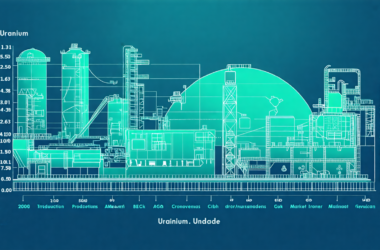In a dramatic turn of events, long-term uranium contract prices have surged to over 16-year highs, standing at around $79 per pound, the highest seen since 2008. This spike is attributed to a combination of factors, including supply uncertainties, rising demand, supply chain disruptions, geopolitical tensions, and environmental mining restraints. The industry is going through a phase of volatility as it struggles to balance these competing forces.
Industry players like uranium miner Cameco CCJ are already taking steps to secure market-related contracts with prices ranging between $125-130/lb at the ceiling and $70-75/lb at the floor. The anticipated further increases in uranium prices are causing ripples across the market as stakeholders brace for impact.
With global push for clean energy and the increasing demand for nuclear power, the International Energy Agency (IEA) has forecasted a near doubling of nuclear generation by 2050. This projection implies an equivalent increase in uranium supply, which is currently posing challenges given the prevailing market conditions.
The recent decision by the Australian government to ban mining at the Jabiluka site, home to one of the world’s largest high-grade uranium deposits, further complicates the supply side. This move, aimed at extending Kakadu National Park to include the Jabiluka site, effectively prohibits any future mining activities in the area.
As the industry navigates through these turbulent times, all eyes are on the evolving dynamics of the uranium market, with stakeholders closely monitoring the developments to strategize their next moves.










